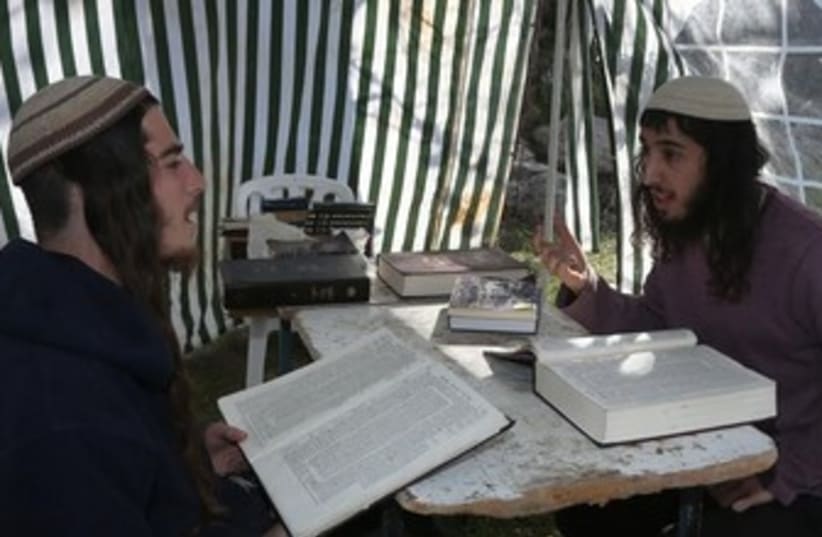Under military guard, settler leaders on Wednesday morning visited the site of the former Homesh settlement in Samaria in the northern West Bank, which the IDF demolished in 2005, and signed a charter vowing to rebuild it.“We didn’t understand what happened then [in 2005], and we do not understand today why the government does not restore this place,” said Avi Ro’eh who heads the Council of Jewish Communities of Judea and Samaria.As he spoke, he stood by the Homesh’s water tower, which with its bright orange paint, has become an iconic symbol of the settlers’ battle to return to the site, situated high on a mountaintop near Nablus with board sweeping views of the surrounding terrain.
Three other settlements in northern Samaria, Sa-Nur, Ganim and Kadim were also evacuated in 2005 during the Disengagement.But attention has focused on Homesh, against which a stiff legal battle has also been waged by Palestinians from the nearby village of Burka, who want to farm the site, and appealed to the High Court of Justice, with the help of the non-governmental organization Yesh Din.As a result of that case, in June the state canceled the 1978 military land seizure order under which land that originally belonged to Palestinians was eventually transformed into a Jewish community.In September the Attorney General’s office ruled that the area was no longer closed to Palestinians.The IDF at the time clarified that the site would remain closed to Israelis.The sites of the other three settlements are closed military zones, and neither Palestinians or Israelis are allowed there.In October, a group of Palestinians with the help of Yesh Din, returned to the site with much fan fare and press attention.But on Wednesday, the site looked as it always had, since the 2005, disengagement. The orange water tower still has a large painted menorah and the words Homesh.The settlement’s paved roads, which are now cracked and full of potholes, still wind through the hilltop. There are still some cement staircases that go nowhere and house foundations.Nestled among its trees is a tent, where a number of young Jewish men sit every day and study.As settler leaders made their way to the site, a former resident described its strategic value as well as the biblical roots of the areas.Ro’eh noted that before he became defense minister, Likud politician Moshe Ya’alon had visited the area and spoken of the necessity of restoring Jewish settlement there.There is state land on the hilltop, and an arrangement could be made to legally re-establish the settlement, he said.Dani Dayan, the former council head and now its chief foreign envoy, said, “the failure of the so called disengagement is today completely clear.To rewind the process and go back to establish again the communities in Gush Katif is impossible these days. But to do it here in Homesh, northern Samaria, what it takes is just a decision by the Israeli government, that decision should be taken immediately.“There is no explanation at all as to why to keep these places without Jewish inhabitants, why not let the people who were expelled from here to return immediately,” said Dayan.But Yesh Din spokeswoman Reut Mor said her organization has asked the Attorney General’s office to order the area to be completely cleared of all traces of the Homesh settlement. The roads, the housing foundations and the water tower need to be removed, she said, so that the Palestinians can begin to farm.Settler leaders vow to rebuild West Bank settlement of Homesh
Homesh was evacuated under the 2005 disengagement; settler leader says state must allow forthwith return of residents.
